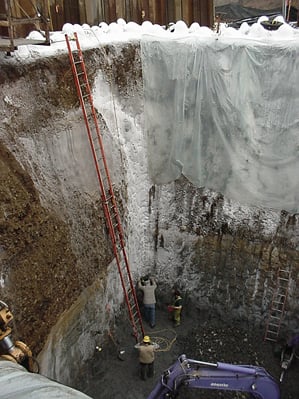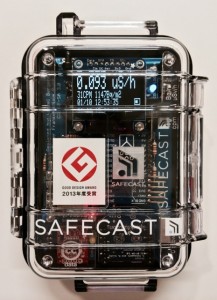Work was to begin as early as this Friday to remove spent fuel rods from the unit 4 reactor site at Fukushima Daiichi. Japan Times reports that there will be a delay of up to two weeks while tests are conducted. Read their scoop here.
Comments closedCategory: News
Those of us that have been following this project and know the obstacles and competition – well we are really proud of the entire Safecast Team. Pulling off a worldwide project of this magnitude is no cakewalk. Safecast has done what governments with vast resources could not or would not do. Surely the Safecast model will have an impact on society for many years to come. Since the March 11 2011 nuclear meltdowns at Fukushima Daiichi Safecast has recorded and published over 10 million data points to the worldwide web. The data is fully accessible to the public at http://www.safecast.org. The Safecast bGeigie Nano, responsible for most data collected by Safecast, is available in kit form from Kithub.
Pieter Franken is Director of Safecast Japan, and Sean Bonner is Safecast Global Director, and their roles have been critical in the success of the project. But there are many talented volunteers involved. Too numerous to mention here, but each one worthy of recognition. The award is a coveted one, and should bring more positive attention to this excellent organization. Maybe the governments of the world will begin paying attention and learn the importance of Good Design, open access, transparency. Letʻs hope
Comments closed
We are generally dedicated to Geiger Counters – the noble tool that lets us see and learn about the invisible realm of radiation that ionizes.
We also post about radiation detection in general.
We get many questions about radiation detection. We use this blog as a tool to answer as many of them as we can in one place that we can refer people to. We try to keep the content understandable by lay people to the best of our abilities, while keeping it also relevant and useful for professional health physics, public safety and security people.
Radiation detection is a big conversation. There are new technologies to discuss, basic physics for those just entering the arena, and general learning about equipment.
Unfortunately, news about Fukushima Daiichi is troubling, and it is dominating peopleʻs attention these days. We apologize for diverging from the geiger counter conversation, but it is becoming evident that Daiichi is something we need to be concerned about. See CNN story. Itʻs not as bad as some people claim it is, but there are many challenging problems yet to be overcome. We wish those responsible for the cleanup good luck, and we hope the workers will get medals, recognition, lifetime medical care, health monitoring, and benefits for their families. Itʻs a gnarly situation and they are some of the heroes who are risking their personal well being for the rest of us.
Itʻs heartening that the Japanese government is jumping in to play a greater role in managing the emergency, and that outside advisors are being used. See related Reuters article. The situation is forcing “outside the box” thinking. A “Wall of Ice” is being proposed as a way to stabilize the problems with groundwater. See MIT Technology Review article.
Finally back to Geiger Counters: Japan Post (think the equivalent of US Postal Service) is partnering with nonprofit Safecast to get more granular data into the maps jointly developed with MIT Media Lab and Keio University. See video (in Japanese).
Letʻs all wish Japan luck getting the Fukushima Daiichi situation under control. Weʻll try to get back to more articles on geiger counters and radiation detection, including how to do basic testing of water, air, food.
Comments closed

